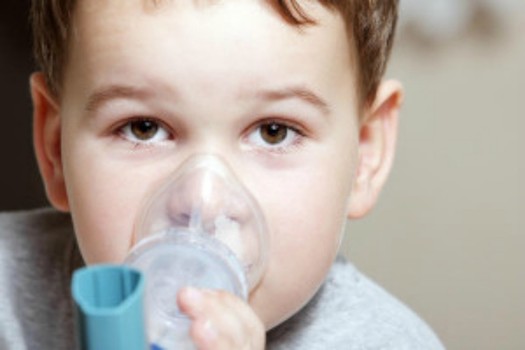You can be exposed to PAHs (polycyclic aromatic hydrocarbons) in the environment, in your home, and in the workplace. Because PAHs exist naturally in the environment and are man-made, you can be exposed in a number of ways. Fumes from vehicle exhaust, coal, coal tar, asphalt, wildfires, agricultural burning and hazardous waste sites are all sources of exposure. PAH readily crosses the placenta and affects an unborn child’s brain; earlier animal studies showed that prenatal exposure impaired the development of behavior, learning and memory.
Researchers at the Institute for the Developing Mind at Children’s Hospital Los Angeles (CHLA) and colleagues at Columbia University set out to determine the effects of prenatal PAH exposure on brain structure and to evaluate the cognitive association of those abnormalities in school-age children.
Dr. Bradley S. Peterson, MD, Inaugural Director of the Institute for the Developing Mind at The Saban Research Institute of CHLA, along with Virginia Rauh, ScD, professor of population and family health and and Frederica Perera, DrPH, PhD, Director and professor of Environmental Health Sciences from the Columbia University’s Mailman School of Public Health, led this cross-sectional imaging study of minority youth to test the effects on brain structure of PAH exposure during the final trimester of pregnancy.
The team used magnetic resonance imaging (MRI) to measure the brains of 40 children from a cohort of more than 600 mother-baby pairs from minority communities in New York City. The Columbia researchers had previously reported that exposure to airborne PAH during gestation in this cohort was associated with multiple neurodevelopmental disturbances, including development delay by age three, educed verbal IQ at age five and symptoms of anxiety and depression at age seven.
The researchers found a dose-response relationship between increased prenatal PAH exposure (measured in the third trimester but thought to index exposure for all of gestation) and reductions of the white matter surface in later childhood that were confined almost exclusively to the left hemisphere of the brain and that involved almost its entire surface. Reduced left hemisphere white matter was associated with slower information processing speed during intelligence testing and with more severe externalizing behavioral problems, including attention-deficit/hyperactivity disorder symptoms and conduct disorder problems, measured at age five was found to contribute to additional disturbances in development of white matter in the dorsal prefrontal region of the brain, which is associated with concentration, reasoning, judgment, and problem-solving ability.
Dr. Peterson explained that the morphological features associated with ADHD symptoms in this community sample differed from those previously reported in youth with the disorder, suggesting that exposure to high levels of PAH may produce a specific subtype of ADHD.
“This is the largest MRI study to date of how early life exposure to air pollutants, specifically PAH, affect the developing mind,’ commented Dr. Peterson. “Our findings suggest that PAH are contributors to ADHD and other behavioral problems due to the pollutants’ disruptive effects on early brain development.”
Dr. Peterson explained that the study’s findings were limited to a minority population with a high level of poverty and low educational attainment, and may therefore not generalize to other populations, although impoverished urban minority populations are disproportionately exposed to air pollutants. While this initial study size was also limited, the researchers are currently undertaking a much larger study in order to confirm and extend their findings.
“Our findings raise important concerns about the effects of air pollutants on brain development in children, and the consequences of those brain effects on cognition and behavior,” says Dr. Peterson. “If confirmed, our findings have important public health implications, given the ubiquity of PAH in air pollutants in the general population.”








